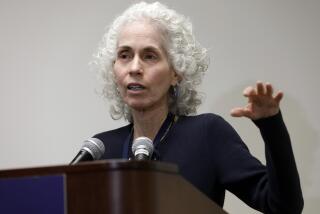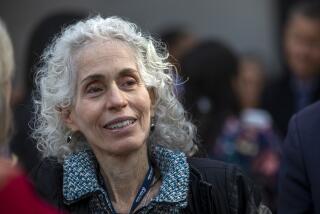County’s Public Health Care in Precarious Position : Budget: Although supervisors have adopted a spending plan, the fate of some clinics depends on state and federal funding that has yet to materialize.
Los Angeles County officials may have finally adopted a budget last week, but the cash-strapped public health care system remains precarious with a still-undetermined number of clinics slated for closure and sources of funding--and service--hanging in the balance.
“The simple fact is that it’s going to be very difficult for people to get care for any number of things, including emergencies,” said Carolyn Rhee, chief operating officer at county-owned Olive View/UCLA Medical Center in Sylmar.
“At this point, we don’t even know how bad it will be because we’re still figuring out the numbers.”
The County Board of Supervisors was able to balance its approximately $12-billion budget last week by including state and federal revenues that the county is not assured of receiving.
So far, supervisors have avoided closing any of the county’s six hospitals. But if the county fails to collect about $3 million officials are counting on from the state and federal governments, further cuts--including the possible closure of a hospital--would be ordered.
Even now the prospects are grim enough, with severe cutbacks in funding and services set to begin Oct. 1. In the north county area:
* More than 200,000 patients who visited clinics at Olive View will be forced to seek alternatives when the county’s hospitals eliminate three-quarters of their outpatient services, including all treatment for diabetics and many for children. In all, Olive View faces a $15.5-million cut in funding.
* In the Antelope Valley, thousands of patients who normally use county-run High Desert Hospital will face long drives as the Lancaster hospital reduces 40% of its outpatient services and a portion of in-hospital care to cut $13 million from its $35-million budget.
* Mid-Valley Comprehensive Health Center in Van Nuys will be significantly reduced in scope, if not eliminated altogether. Last year, it handled more than 75,000 visits. The exact reduction in staffing and services has yet to be determined.
* Likewise, most of the San Fernando, Santa Clarita and Antelope valleys’ nine health clinics will probably shut down, as the health department closes 29 of its 39 clinics countywide.
*
The surviving county clinics will be restructured and will offer only AIDS testing, treatment for tuberculosis and sexually transmitted diseases, and tracking of communicable diseases. Eliminated will be prenatal care, routine checkups and possibly immunizations.
To fill in some of the service gaps, the health department is negotiating agreements with private groups to run a number of clinics.
Health officials say they are willing to lease existing county health clinics at minimal rates to private care-providers if those entities agree to care for poor and uninsured patients.
Although county officials have been meeting with private agencies, no agreements have been reached yet.
“It’s kind of nerve-racking,” said one county health official. “With the clinics, the problem is so massive, the need is so great. It’s all extremely complex.”
In any event, health officials said, it will be the 20% of county residents without any medical insurance who will suffer the most during and after the health restructuring.
“If you have Medi-Cal, you will probably be OK, someone will see you,” said Olive View’s Rhee. “But if they don’t have insurance, they probably don’t have much of a chance [to be seen].”
More to Read
Sign up for Essential California
The most important California stories and recommendations in your inbox every morning.
You may occasionally receive promotional content from the Los Angeles Times.










